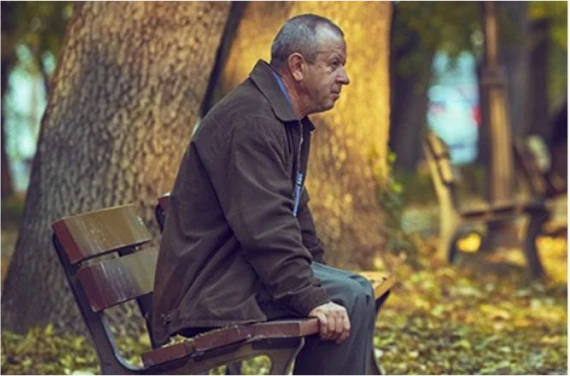
A Personal Encounter with Suicide among the Elderlyaa.
Psychiatric Medical would like to take this opportunity to remind you that suicide has a profound impact on millions of people annually. This is a topic that is particularly close to home for many of us at PM, and for one of our team members, it is a driving force behind her decision to work in the mental health field. Today, we would like to share her personal experience with you.
Sydney Freeman was 25 years old and eagerly anticipating the arrival of her first child. Her large, close-knit family only added to her excitement about becoming a mother, and she was especially grateful that her grandparents would be able to meet their great-grandchild. Little did she know that one phone call would turn her world upside down.
“I had just spoken to him a week earlier. He told me that he would see me soon,” Sydney recalls, her eyes welling up with tears despite the passage of a decade. “No one can prepare you for the pain and ongoing grief. Something was taken from me the day my grandfather died by suicide.”
Sadly, Sydney’s experience is not unique. According to the National Council on Aging (NCOA), while older adults make up only 12% of the population, they account for approximately 18% of suicides. Furthermore, men aged 65 and above have the highest suicide rate.
However, for those who have lost a loved one to suicide, statistics offer little solace. They simply want more time with their loved ones and answers to the question of how this could have happened.
Risk Factors for Suicide in the Elderly Population
Regrettably, elderly individuals encounter distinctive risk factors in relation to the likelihood of succumbing to suicide. Certain of these factors are attributable to our societal framework, while others are simply a consequence of the aging process.
Outlined below are several rationales why older adults may encounter difficulties with depression or suicidal ideation (NCOA, 2021):
Death of Family and Friends:
Losing a partner or close friend may trigger feelings of depression and grief.
Such losses can lead individuals to contemplate their own mortality.
Long-term relationship losses can result in social isolation.
Facing an Illness:
As we age, developing health conditions can lead to pain and discomfort.
Diagnosis of diseases affecting quality of life can cause significant distress.
Financial Insecurity:
Many older adults rely on fixed incomes.
Rising prices can strain finances, leading to despondency, especially without family support.
Loss of Mobility:
Reduced mobility may necessitate the use of aids like wheelchairs, walkers, or canes.
Limitations in going out and increased homebound status can result in feelings of isolation and loneliness.
The Impact of Suicide on Family Survivors
Sydney recollects that the loss of a loved one to suicide elicits a plethora of emotions. Despite being aware that it is not their responsibility, survivors bear the anguish of believing that they could have prevented the tragedy.
Suicide is a phenomenon that affects families on a large scale. It inflicts pain on those who are left behind and leaves them grappling with unresolved queries. Harvard Medical School has identified numerous consequences that survivors experience when a family member succumbs to suicide.
The ensuing list outlines these consequences and elucidates how they impact family survivors.
Traumatic Aftermath:
Survivors are frequently required to identify their loved ones or answer questions about the traumatic scene.
This scene may be violent or distressing for loved ones to witness.
It can be overwhelming for survivors, who are already reeling from the shocking situation, to face inquiries from law enforcement and medical personnel.
Stigma and Isolation:
Suicide can isolate survivors from their community and sometimes even from other family members.
Survivors often feel a need to shield their loved one’s memory from judgment.
The stigma surrounding mental illness can be a challenge for survivors, particularly if there’s a history of mental health issues.
Conflicting responses among family members about what to disclose can lead to conflict instead of support.
Mixed Emotions:
The loss of a loved one to suicide can evoke a complex range of emotions.
Despite understanding that suicide results from mental illness, survivors can feel abandoned and rejected by their departed loved one.
Seeking Reason:
Suicide can disrupt one’s sense of self, relationships, and worldview.
Survivors often engage in the “What if” game, pondering if they could have done more and overestimating their potential role.
A strong desire for understanding the circumstances surrounds their feelings and grief.
Risk for Survivors:
Just like any loss, losing a loved one to suicide can prompt existential questions.
Survivors may question the value of life itself, with heightened risk.
Professional help is essential if these feelings persist or intensify.
Indicators of Potential Suicide Risk in a Beloved Individual
Sydney’s Story and Warning Signs: While Sydney continues to grieve the loss of her grandfather, she believes that sharing her story is an essential part of her healing journey. “I want other people to know that it can happen to anyone. I want them to be aware of the fragility of our older population and the warning signs that I wish we had seen.”
Warning Signs to Be On Alert For:
Displays significant changes in behavior
Gives away prized possessions
Has a history of previous suicide attempts
Recently experienced significant losses
Struggles with eating or sleeping
Increases alcohol or drug use
Neglects personal appearance
Loses interest in school, work, or hobbies
Makes preparations for death such as writing a will and final arrangements
Appears preoccupied with thoughts of death and dying
Engages in unnecessary risk-taking
Talks openly about committing suicide
Withdraws from friends and social activities